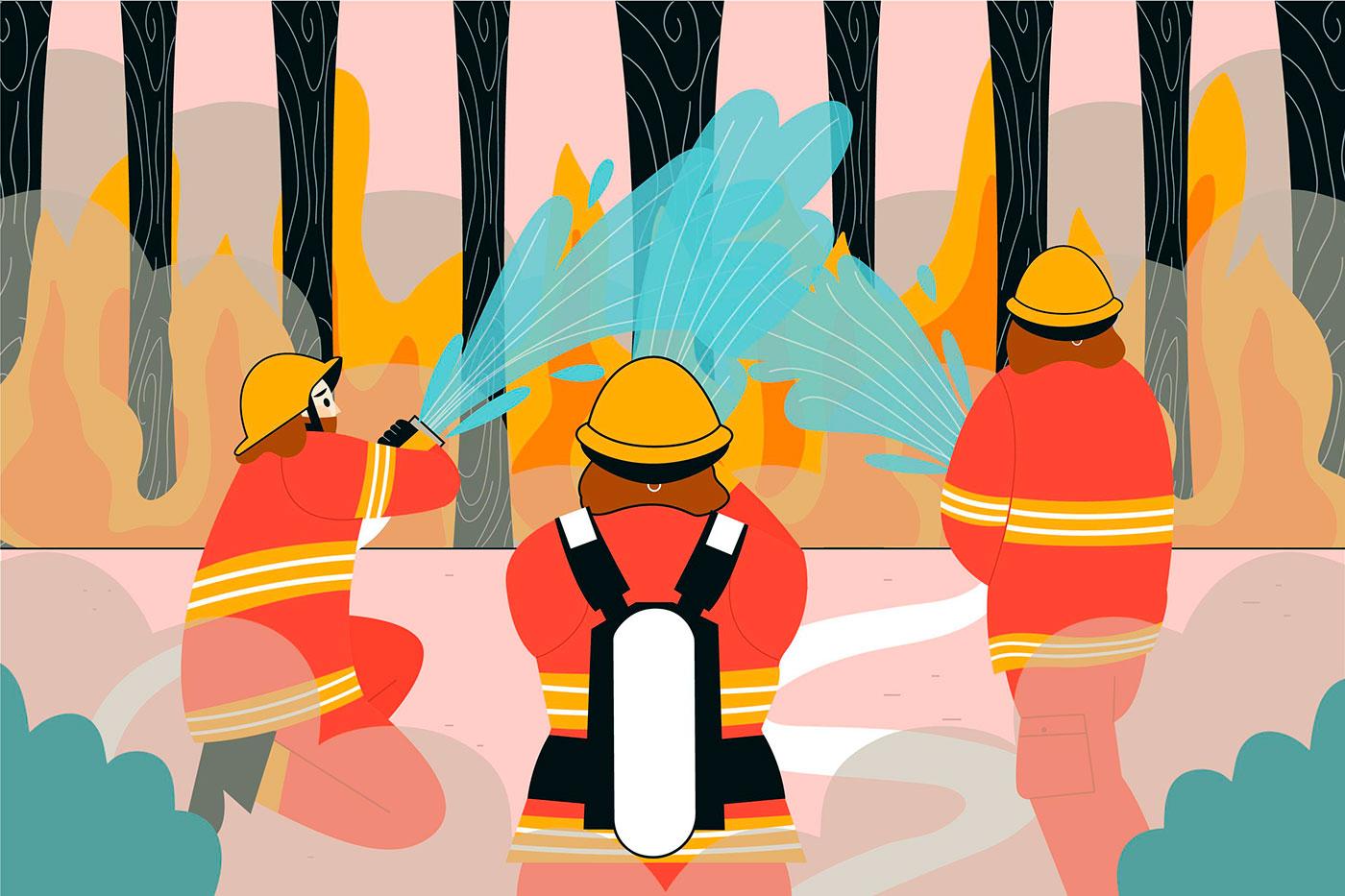Understanding Fire Danger
Fire safety hazards can arise from various sources and increase the likelihood of a fire starting or spreading. These hazards may include:
- Electrical faults: Commonly caused by faulty wiring, overloaded circuits, or damaged appliances.
- Smoking: Particularly in areas where smoking is prohibited or when materials are not disposed of properly.
- Cooking-related fires: Often due to unattended cooking, overheating, or combustible materials placed too close to heat sources.
- Faulty heating equipment: Poorly maintained or incorrectly installed heaters, furnaces, and boilers can pose a significant risk.
- Combustible materials: Items like paper, chemicals, and fuels can spread a fire rapidly if not stored correctly.
- Build-up of waste material: Even small amounts of flammable liquids, dust, or overheated equipment can ignite, especially if combustible materials are nearby.
- Human error: A lack of training is one of the leading causes of workplace fires.
Fire hazards can be found in buildings, outdoor areas, and vehicles. In outdoor environments, vegetation and debris can fuel wildfires, while in vehicles, issues like engine overheating or electrical faults can cause fires.
How to Identify Hazards
Identifying fire safety hazards is crucial for prevention. Some common signs of potential fire hazards include:
- Damaged or overheating electrical equipment
- Accumulation of combustible materials like paper, cardboard, or debris
- Blocked or obstructed fire exits
- Malfunctioning smoke detectors or sprinkler systems
- Faulty heating equipment
- Improper storage of flammable liquids, such as gasoline or propane
- Smoking in prohibited areas
How to Avoid Injury
To prevent injuries in the event of a fire, it is essential to take the following precautionary measures:
- Regularly inspect electrical equipment to ensure it is functioning correctly.
- Keep combustible materials away from heat sources.
- Ensure fire exits are clear and accessible at all times.
- Test smoke detectors and sprinkler systems regularly.
- Store flammable liquids in approved containers and designated storage areas.
- Follow smoking policies and only smoke in designated areas.
- Have a fire escape plan and practice it with family or colleagues.
Types of Injury
Fires can cause various types of injuries, including:
- Burns: These can range from minor to severe and cause pain, scarring, or permanent disfigurement. There are three degrees of burns:
- First-degree burns: Affect the outer layer of the skin, causing redness, minor swelling, and pain (e.g., sunburns).
- Second-degree burns: Affect the first two layers of the skin, causing blistering, severe pain, redness, and swelling.
- Third-degree burns: Damage all skin layers and underlying tissues. The affected area may appear white, blackened, or leathery, with possible nerve damage causing numbness.
- Smoke inhalation: Breathing in smoke can cause respiratory issues like coughing, wheezing, or shortness of breath, and may lead to serious conditions such as asthma or lung damage.
- Carbon monoxide poisoning: This gas, produced during burning, can cause headaches, dizziness, nausea, or even death.
- Trauma: Injuries from falls, explosions, or collapsing structures during a fire.
- Psychological trauma: Surviving a fire can result in anxiety, depression, or PTSD.
- Other injuries: Firefighters and emergency responders can suffer from sprains, fractures, and other physical injuries during rescue operations.
First Aid Training
First aid training is vital in preparing for fire emergencies. Australia Wide First Aid offers training that covers:
- Increased knowledge and confidence in administering first aid for fire-related injuries.
- Improved ability to identify and treat different types of burns.
- Recognition of smoke inhalation symptoms and appropriate response measures.
- Training in using fire extinguishers and other safety equipment, reducing injury and property damage risks.
- Enhanced workplace safety, decreasing the likelihood of injury or death from fire-related incidents.
- Boosted employee morale and job satisfaction by fostering a culture of safety.
- Potential cost savings by reducing workplace injuries and associated expenses.
CPR and AED training can be lifesaving in fire-related incidents. Knowing how to provide first aid for burns or smoke inhalation can make the difference between life and death.
In the event of a fire emergency, prompt and effective first aid is crucial to prevent further injury and save lives. Proper training enables employees to identify various types of burns, assess injury severity, and provide suitable treatment. Recognising signs of smoke inhalation early is also essential, as it can be life-threatening if left untreated.
By having a well-trained workforce, businesses can create a safer workplace and reduce the risk of injury or death from fire-related incidents. Offering first aid training also enhances employee morale and promotes a safety-conscious workplace culture.
